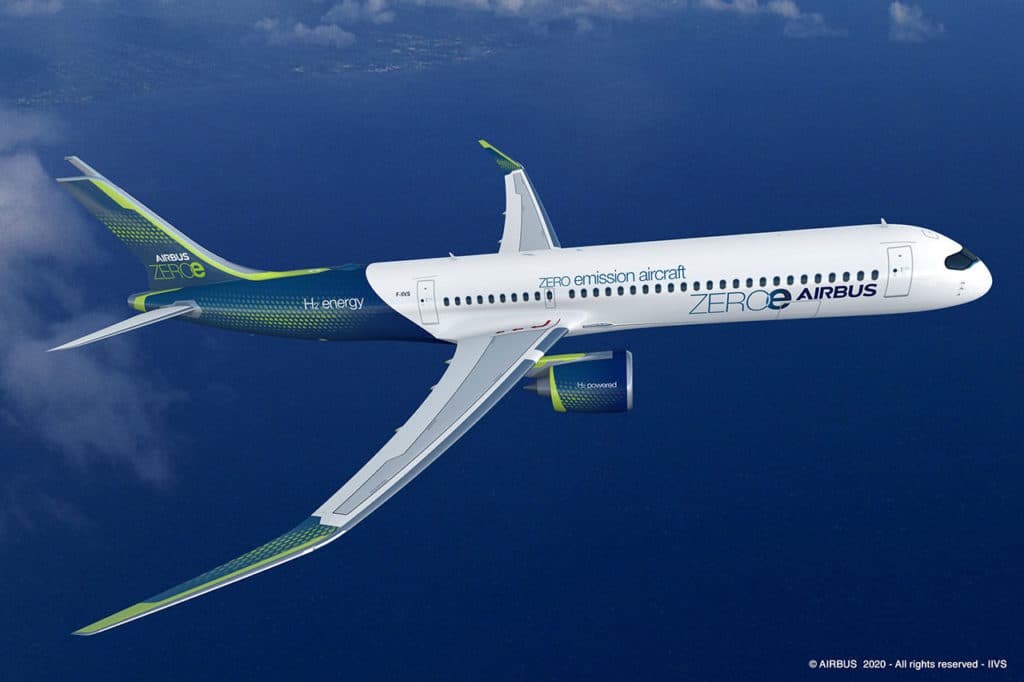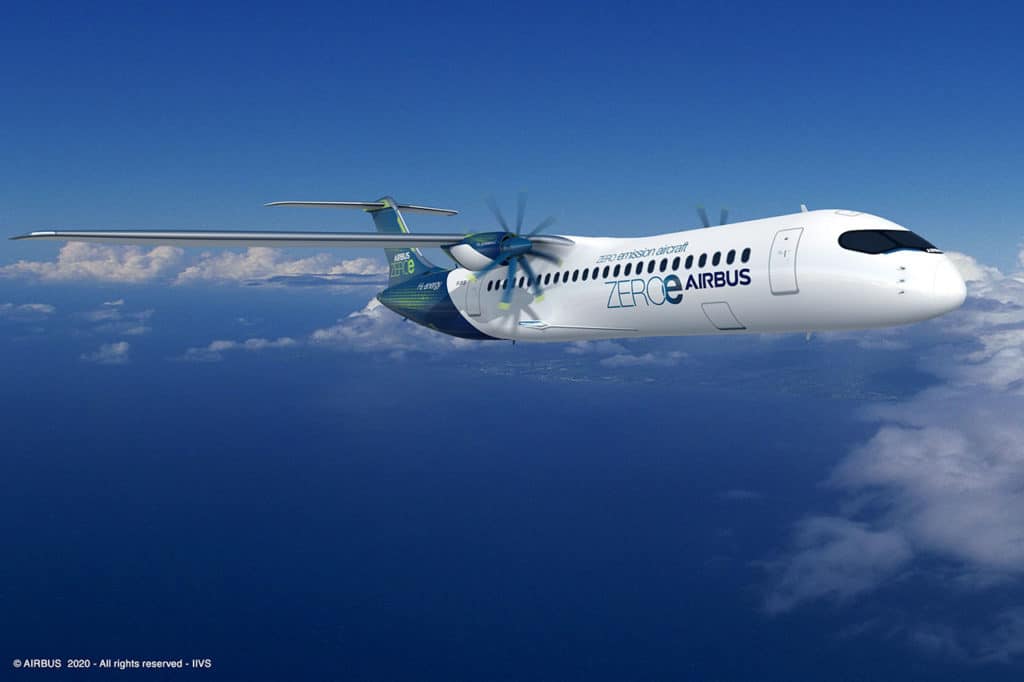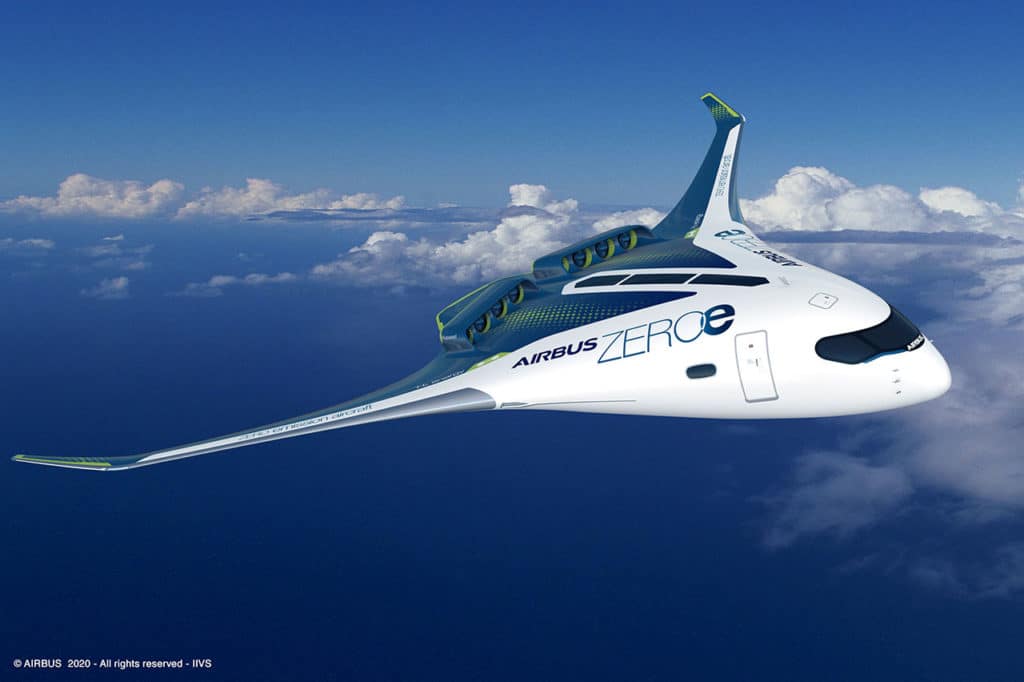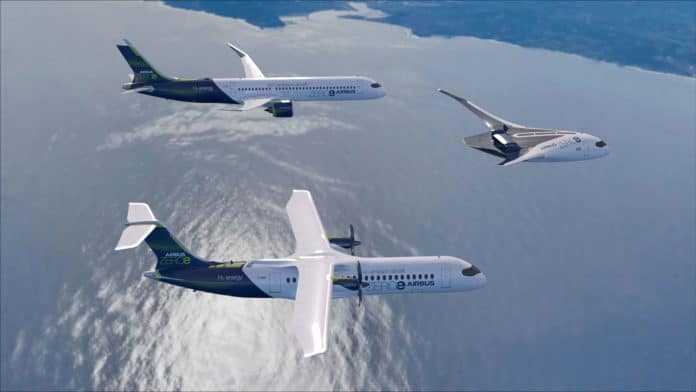When we talk about sustainable drives here, we look mainly at cars and there mainly at battery-powered electromobility. So far, hydrogen has played a secondary role in cars. It is also possible that in the future, things will look different in the air, although we are talking about a future that is still a few years away – 15 years, to be more precise, at least with regard to the Airbus.
The aircraft manufacturer has revealed three concepts for the world’s first zero-emission commercial aircraft, which could enter service by 2035. The three concepts – all codenamed “ZEROe” – rely on hydrogen as a primary power source. Airbus believes that hydrogen holds exceptional promise as clean aviation fuel and is likely to be a solution for aerospace and many other industries to meet their climate-neutral targets.
“This is a historic moment for the commercial aviation sector as a whole, and we intend to play a leading role in the most important transition this industry has ever seen. The concepts we unveil today offer the world a glimpse of our ambition to drive a bold vision for the future of zero-emission flight,” said Guillaume Faury, Airbus CEO. “I strongly believe that the use of hydrogen – both in synthetic fuels and as a primary power source for commercial aircraft – has the potential to significantly reduce aviation’s climate impact.“
These concepts each represent a different approach to achieving climate-neutral zero-emission flight. As noted by Airbus, visually, two of them are similar to a classic commercial aircraft, except for the longer and more flexible wings, while a third model looks out of place.

The first one is a turbofan structure will be capable of carrying between 120 and 200 passengers and is expected to have a range of more than 2,000 nautical miles (3,700 km). It can be operated transcontinentally and is powered by a modified gas turbine engine running on liquid hydrogen, instead of jet fuel, through combustion. Liquid hydrogen will be stored and distributed in tanks located behind the rear pressure bulkhead.

Next is a turboprop construction (up to 100 passengers) that uses a turboprop engine in place of a turbofan. Again, it will be powered by hydrogen combustion in modified gas turbine engines that can travel more than 1,000 nautical miles (1,852 km) or more, which Airbus believes makes it an option perfect for short-haul flights.

As already mentioned, the third concept looks significantly different. This is a “blended wing body” concept designed to transport up to 200 passengers. In this design, the wings are merged with the main body of the aircraft, with a range similar to that of the turbofan concept. The concept would offer multiple options for hydrogen storage and distribution, and for cabin layout.
“These concepts will help us explore and mature the design and layout of the world’s first climate-neutral, zero-emission commercial aircraft, which we aim to put into service by 2035,” said Guillaume Faury. “The transition to hydrogen, as the primary power source for these concept planes, will require decisive action from the entire aviation ecosystem. Together with the support from government and industrial partners, we can rise up to this challenge to scale-up renewable energy and hydrogen for the sustainable future of the aviation industry.“
